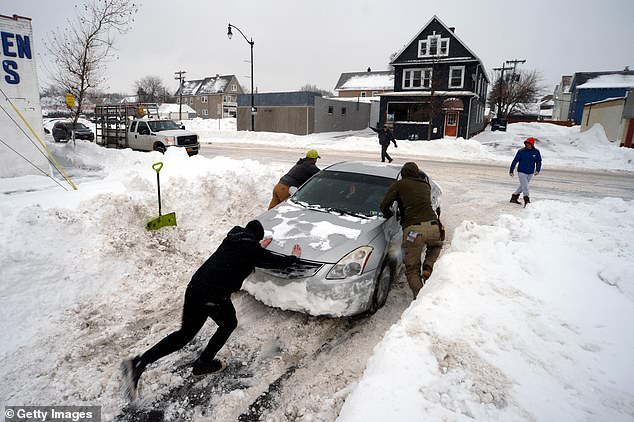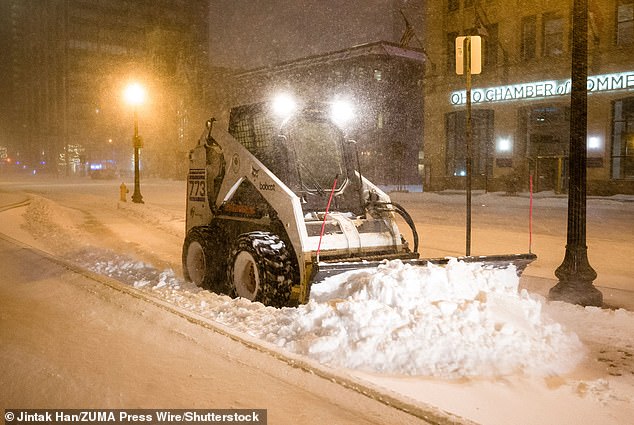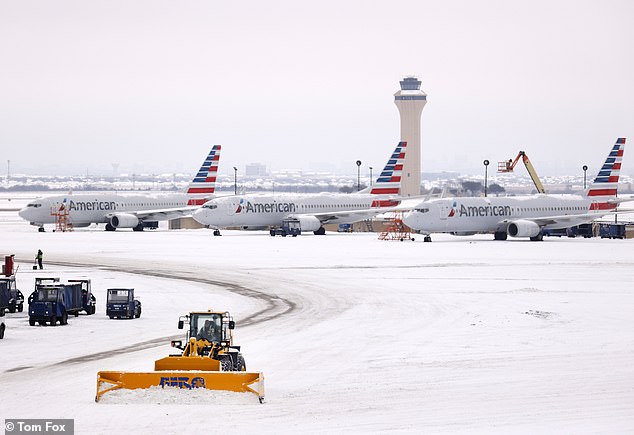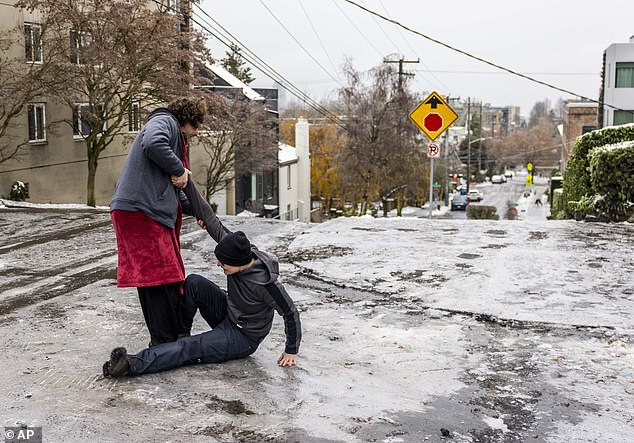Winter weather report: Warmer, drier winter is predicted for the north – and wetter than normal across the southern states as forecasters make El Niño readings
People living in northern parts of the US could experience a warmer, drier winter, while southern states could see more rain and snow as forecasters continue to monitor ‘El Niño’ and its impacts in the coming months.
El Niño is one of three phases of the El Niño Southern Oscillation – which has a major influence on temperatures and weather patterns on Earth, thanks to a band of warm water in the Pacific Ocean.
The El Niño phenomenon – which will occur in 2023-2024 – can significantly affect the weather in several geographic regions of the US – and its effects are normally greatest in December.
It brings warmer water, causing the Pacific jet stream to move south of its neutral position.
This shift is making the northern U.S. generally drier and warmer than normal – and at the same time, the U.S. Gulf Coast and the Southeast are experiencing wetter periods than normal and flooding has increased.
People walk across a frozen lake in Central Park in New York City on January 30, 2022. The El Niño phenomenon can significantly impact US weather – and its effects are normally greatest in December

Buffalo, New York was hit with more than 120 inches of snow last winter. Forecasters say there is a 70 percent change. El Niño will be ‘strong’ this year – making the northern US generally drier and warmer than normal – and at the same time the US Gulf Coast and the Southeast will experience wetter periods than normal and flooding has increased.
And this wet weather could be critical for southern states like Texas and Mississippi, which often see rainless months year-round. But falling temperatures can cause this precipitation to turn to snow.
Forecasters say there is a 70 percent chance that El Niño will be “strong” this year.
The latest forecast update from the European Center for Medium-Range Weather Forecasts shows that this winter will see a typical El Niño weather pattern, but there will be a belt of low pressure anomalies in the south.
For North America, the ECMWF forecast, known as one of the most reliable, shows above-average temperatures for most of Canada.
Warmer than normal temperatures are expected between December and February in the Northwestern United States and upper Midwest.
According to the Climate Prediction Center, winter weather in the U.S. will average about three degrees above normal.
Matt Rosencrans, the climate center’s lead hurricane forecaster, said: “There are small signs that El Niño is starting to affect the circulation over the Atlantic Ocean.”
In addition to temperatures, precipitation over the US this winter will also be affected by the Pacific weather system.

A skid steer plows snow in front of the Ohio Statehouse in Columbus, Ohio, as a major winter storm brought freezing temperatures to the state in December 2022

Snow on the ground at Dallas-Fort Worth International Airport in Texas in February 2021
There will be drier conditions in the northwestern United States, around the Great Lakes and in southwestern Canada, following an El Niño-like pattern.
The strong subtropical jet stream associated with El Niño will bring more rain and snow to the southern and eastern parts of the United States and the Plains.
Specifically, more snow will fall in parts of the lower Ohio River Valley.
But parts of the western U.S. and the Midwest will see much less snow than normal, according to ECMWF models.
This is due to the less than average precipitation in these areas during the coming winter.
Although the forecast takes into account a three-month average, there may be different trends towards the end of winter from December through February.

Icy conditions seen in Seattle in December 2022
Colder weather front anomalies will become more apparent in the Southeast from January through March.
According to the models, this means there is more cold potential for the US in the middle and later parts of winter 2023 to 2024.
The winter of 2009 through 2010 was the last to have an El Niño with the same forecast strength as this year – so forecasters are looking back to see how this period will develop.
According to data from the National Oceanic and Atmospheric Administration, there was cold weather in the southern and central US in 2009, and it was very wet on the East Coast.
There were several snowstorms in the Northeast that winter.
Due to its location near the Atlantic Ocean, the area can sometimes be subject to the vagaries of other coastal storms, aside from El Niño.
